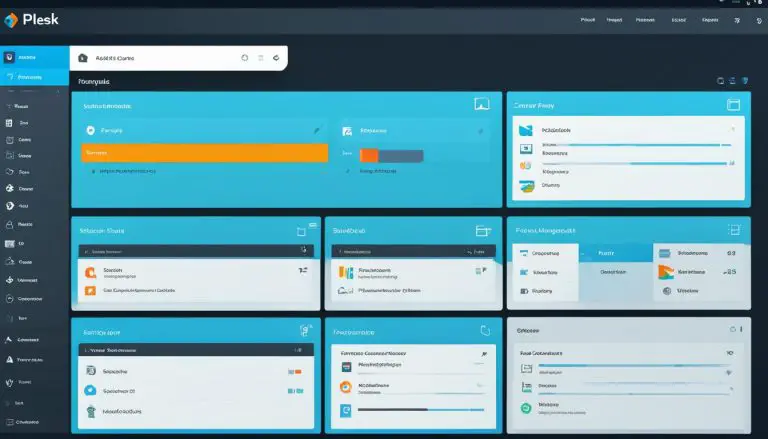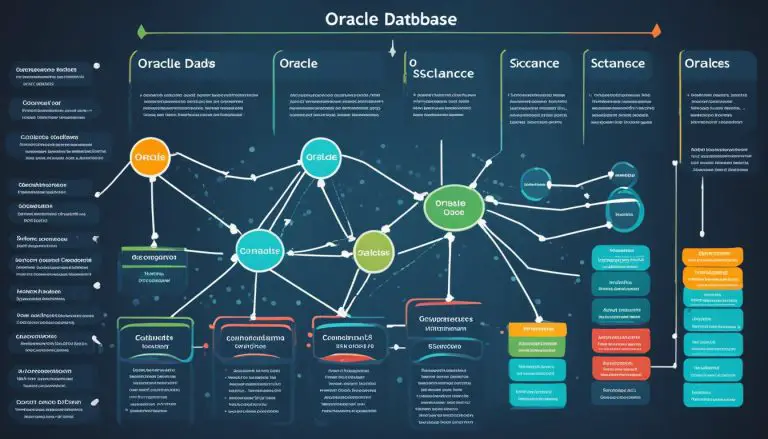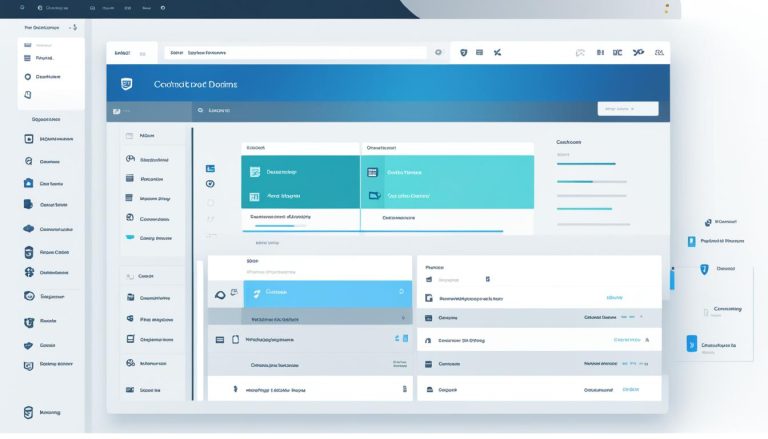Understanding What is Cassandra Database Tech
In today’s era of Big Data, businesses and organizations are constantly seeking robust and scalable solutions to store, manage, and analyze their vast amounts of information. One such technology that has gained significant popularity is Cassandra, a NoSQL distributed database. But what exactly is Cassandra and how does it fit into the modern data landscape? Let’s explore.
Cassandra is an open-source, non-relational database that offers a lightweight and highly distributed approach to data management. It is designed to handle the challenges posed by Big Data, providing horizontal scalability, distributed architectures, and flexible schema definition. Its distributed nature allows it to easily scale under high-stress conditions and prevents data loss from hardware failures.
Running on multiple machines, Cassandra is highly resilient and robust. It achieves scalability by adding more nodes without any downtime, enabling developers to dynamically scale their databases as needed. With its lightweight design and emphasis on distributed computing, Cassandra is well-suited for handling massive amounts of data with ease.
Now that we’ve introduced Cassandra, let’s dive deeper into its features and how it works.
Key Takeaways:
- Cassandra is a NoSQL distributed database that offers a lightweight and highly distributed approach to data management.
- It provides horizontal scalability, distributed architectures, and flexible schema definition, making it ideal for handling Big Data challenges.
- Cassandra’s distributed nature allows it to easily scale under high-stress conditions and prevents data loss from hardware failures.
- It can run on multiple machines, making it highly resilient and robust.
- Cassandra achieves scalability by adding more nodes without any downtime, allowing developers to dynamically scale their databases as needed.
Cassandra Features
In this section, I will discuss some key features of Cassandra that make it a powerful and flexible database technology. Let’s dive in!
Distributed and Scalable
Cassandra offers a distributed footprint, allowing it to be deployed across multiple nodes. This distribution ensures high availability and eliminates single points of failure in the system. With Cassandra, you can easily scale your database horizontally by adding or removing nodes, enabling you to handle large amounts of data and accommodate growing needs.
Open-Source Availability
Cassandra is an open-source database, which means it is freely available for use and can be customized according to your specific requirements. Whether you’re a startup or an enterprise, Cassandra’s open-source nature offers flexibility and cost-effectiveness.
Cassandra Query Language (CQL)
Cassandra uses CQL, a powerful query language similar to SQL, to interact with the database. CQL provides a familiar syntax for developers and allows for efficient data retrieval and manipulation. Developers can easily express complex queries and operations using CQL.
Fault Tolerance and Replication
Cassandra ensures data reliability and fault tolerance through its replication capabilities. Data is replicated across multiple nodes, preventing data loss and ensuring that the system continues to function even if a node fails. This replication strategy ensures high availability and data recovery.
Schema-Free Data Model
Cassandra’s schema-free data model offers flexibility in data management. Unlike traditional relational databases, Cassandra does not require a predefined schema, which allows for changes and modifications to the data structure without restrictions. This flexibility makes Cassandra ideal for handling dynamic and changing data.
Tunable Consistency
Cassandra allows you to tune the consistency levels based on the needs of your application. You can trade off between the read and write consistency to achieve the desired performance and data reliability. This tunable consistency ensures that Cassandra can be optimized for a wide range of use cases.
Fast Write Performance
Cassandra is known for its fast write performance, making it an excellent choice for applications that require efficient data storage and processing. With its distributed architecture and optimized write path, Cassandra can handle high write volumes without sacrificing performance.
How Does Cassandra Work?
Cassandra operates on a distributed architecture composed of clusters, nodes, and data centers. This decentralized system ensures high availability and equal importance among all nodes. The design allows for seamless scalability by adding or removing nodes as needed.
One of the key components of Cassandra’s operation is its partitioning system. This system determines the location where data is stored within the distributed architecture. By spreading data across different nodes, Cassandra ensures fault tolerance and data recovery. Each piece of data is replicated across multiple nodes to provide redundancy and protect against failure. This replicability feature allows Cassandra to continue functioning even if a node or data center experiences an issue.

“Cassandra’s distributed architecture and partitioning system enable it to handle massive amounts of data while maintaining high availability and fault tolerance.”
Key Features of Cassandra
When it comes to handling large amounts of data across multiple nodes and data centers, Cassandra stands out with its key features. Let’s explore what makes Cassandra a popular choice for modern data management:
Open-source Availability
Cassandra is an open-source database, which means it’s freely available for use and can be customized to fit specific requirements. Its open nature encourages wide adoption and fosters a strong community that contributes to its development and improvement.
Distributed Footprint
One of Cassandra’s unique features is its distributed footprint. It operates on a decentralized architecture, allowing it to maintain high availability even if individual nodes fail. This distributed approach ensures data is replicated across multiple nodes, preventing data loss and providing fault tolerance.
Scalability
Cassandra excels in scalability, allowing for easy expansion as data needs grow. It can handle massive amounts of data by adding more nodes to the cluster without downtime. This horizontal scalability enables seamless scaling to meet the demands of evolving applications.
Cassandra Query Language (CQL)
Cassandra Query Language, or CQL, is a powerful and versatile query language similar to SQL. It offers a familiar interface for developers, making it easy to retrieve data, perform complex analytics, and interact with the database. CQL allows for efficient data querying and manipulation.
Fault Tolerance
Cassandra’s fault tolerance ensures that data remains available even in the face of hardware failures or node outages. By replicating data across multiple nodes, Cassandra provides redundancy and automatically handles failover, ensuring continuous operations.
Schema-free Data Model
Unlike traditional relational databases, Cassandra follows a schema-free data model. This means there is no rigid structure imposed on the data, allowing for flexibility and easy adaptation to changing business requirements. Developers have the freedom to modify the data model without downtime or complex migrations.
Tunable Consistency
Cassandra offers tunable consistency, allowing developers to define the level of consistency required for each operation. This flexibility is vital in distributed systems, where balancing consistency and performance is crucial. Developers can optimize the consistency level based on the specific needs of their application.
Fast Write Performance
Cassandra delivers exceptional write performance, making it ideal for applications that prioritize efficient data storage and processing. Its distributed architecture and the ability to handle concurrent writes ensure speedy data ingestion, enabling real-time data workflows.
With these key features, Cassandra emerges as a comprehensive and robust solution for managing and scaling data. Its open-source availability, distributed footprint, scalability, CQL, fault tolerance, schema-free data model, tunable consistency, and fast write performance make it an excellent choice for modern data management needs.
Top 6 Uses of Cassandra
Cassandra is widely recognized and utilized across various enterprise use cases due to its remarkable features and capabilities. Explore the top six use cases that highlight the diverse applications and benefits of Cassandra:
- Real-time analytics: Cassandra’s ability to handle substantial volumes of data while ensuring high availability makes it an ideal choice for real-time analytics applications. It enables organizations to gain valuable insights and make data-driven decisions in real-time.
- Time-series data: With its efficient handling and management of time-series data, Cassandra is highly favored for applications that require the tracking and analysis of time-based data. It empowers businesses to effectively monitor trends and patterns over time.
- Internet of Things (IoT): Cassandra’s distributed architecture and scalability make it a preferred database solution for IoT applications. Its ability to handle massive amounts of data generated by sensors and devices ensures reliable storage and real-time processing.
- Messaging systems: Due to its fast write performance and fault tolerance, Cassandra is well-suited for messaging systems that demand high availability and reliability. It enables seamless communication and messaging across various platforms.
- Content management: Cassandra’s remarkable capability to handle vast amounts of data and scale horizontally makes it an excellent choice for content management systems. It ensures efficient storage and retrieval of large volumes of content, empowering organizations to effectively manage and deliver content to their users.
- Gaming applications: The scalability and tunable consistency offered by Cassandra make it an ideal solution for gaming applications. Its ability to process real-time data and maintain high availability enhances the overall gaming experience for users.
These diverse use cases showcase the adaptability and effectiveness of Cassandra across a range of industries. Whether it is enabling real-time analytics, managing time-series data, powering IoT applications, facilitating messaging systems, supporting content management, or enhancing gaming experiences, Cassandra’s robust features and scalability make it a go-to database solution.
| Use Case | Description |
|---|---|
| Real-time analytics | Enables real-time data analysis and decision-making. |
| Time-series data | Efficiently handles and analyzes time-based data. |
| Internet of Things (IoT) | Scalable solution for managing data from IoT devices. |
| Messaging systems | Provides high availability and reliability for messaging platforms. |
| Content management | Efficiently stores and retrieves large volumes of content. |
| Gaming applications | Delivers real-time processing and high availability for gaming experiences. |
Conclusion
Cassandra is a powerful distributed database technology that offers numerous benefits for managing and scaling data. Its distributed architecture, scalability, fault tolerance, and fast write performance make it suitable for a wide range of applications.
Whether you need to handle real-time analytics, manage time-series data, power IoT applications, support messaging systems, enable content management, or drive gaming applications, Cassandra provides the flexibility and resilience needed for modern data management.
With its open-source availability and robust feature set, Cassandra is a valuable tool for businesses seeking reliable and scalable data management solutions. Its ability to handle large volumes of data, distributed nature, and fault tolerance make it a top choice for enterprises across various industries. By leveraging Cassandra, businesses can ensure high availability, efficient data storage, and seamless scalability, ultimately enhancing their overall data management capabilities.
FAQ
What is Cassandra?
Cassandra is a NoSQL distributed database that offers a lightweight, open-source, non-relational, and highly distributed approach to data management.
What are the key features of Cassandra?
Some key features of Cassandra include its open-source availability, distributed footprint, scalability, Cassandra Query Language (CQL), fault tolerance, schema-free data model, tunable consistency, and fast write performance.
How does Cassandra work?
Cassandra works on a distributed architecture composed of clusters, nodes, and data centers. Each node in Cassandra is equal and carries the same level of importance, ensuring a decentralized and highly available system.
What are the key features of Cassandra?
Some key features of Cassandra include its open-source availability, distributed footprint, scalability, Cassandra Query Language (CQL), fault tolerance, schema-free data model, tunable consistency, and fast write performance.
What are the top uses of Cassandra?
Cassandra is widely used in various enterprise use cases, including real-time analytics, time-series data management, Internet of Things (IoT) applications, messaging systems, content management, and gaming applications.
What are the benefits of using Cassandra?
Cassandra provides benefits such as distributed architecture, scalability, fault tolerance, fast write performance, and versatility for managing and scaling data in various applications.
Source Links
- About the Author
- Latest Posts
Janina is a technical editor at Text-Center.com and loves to write about computer technology and latest trends in information technology. She also works for Biteno.com.






